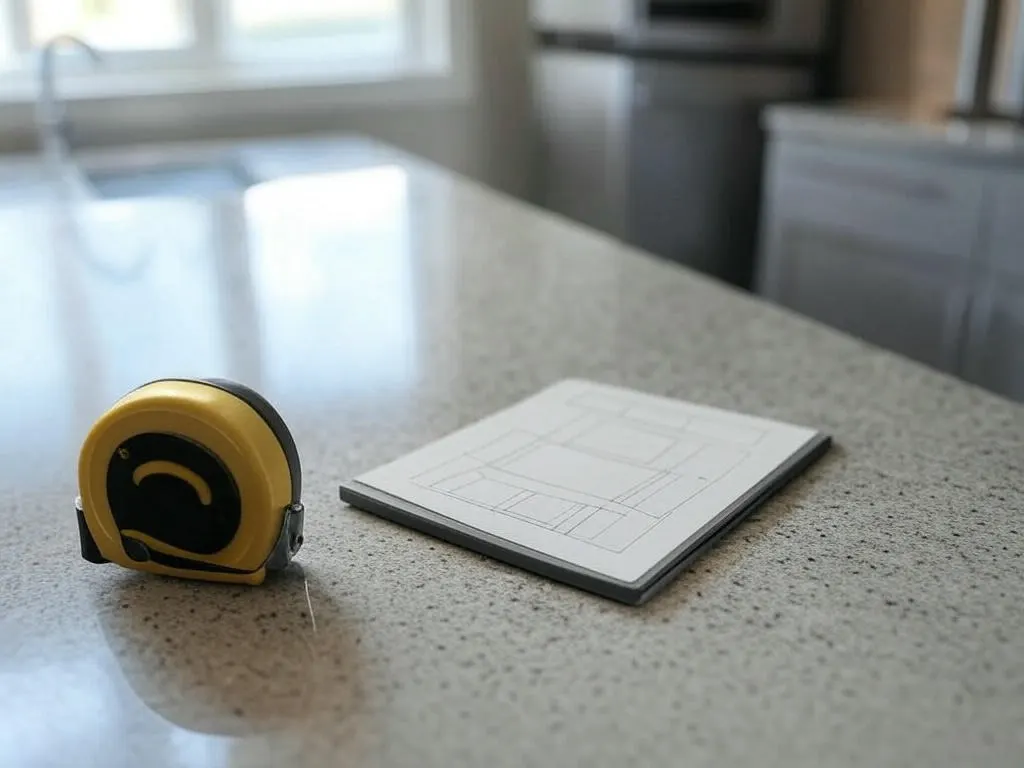The Art of Measuring Granite Slabs for Your Dream Kitchen

The Art of Measuring Granite Slabs for Your Dream Kitchen
Granite has long been a favorite for homeowners and designers alike, thanks to its durability, natural beauty, and timeless appeal. Whether you’re revamping your kitchen countertops or crafting a luxurious island, getting the measurements right is the foundation of a flawless installation. At RMI MarmoGranito, we believe that precision in measuring granite slabs can elevate your project from ordinary to extraordinary. Let’s dive into the art of measuring granite and why it matters.
First, why granite? This igneous rock, formed deep within the Earth’s crust, boasts unique patterns and colors—each slab tells a story of millions of years. But its beauty is only part of the equation. Granite’s strength makes it resistant to scratches, heat, and stains, perfect for busy kitchens. However, to harness its full potential, accurate measurements are non-negotiable. A misstep here could lead to wasted material, uneven edges, or a countertop that doesn’t fit your space.
So, how do you measure granite slabs effectively? Start with the basics: a tape measure, a notepad, and a keen eye. Begin by measuring the length and width of the area where the granite will sit. For a standard countertop, measure the depth (typically 25-26 inches) and the full length along the wall. Don’t forget to account for overhangs—usually 1-1.5 inches beyond the cabinet edge for a polished look. If your design includes an island or a sink cutout, measure those separately. For sinks, note the exact dimensions of the basin and add a small buffer for the mounting.
One pro tip: always measure twice. Granite slabs are heavy and expensive, so double-checking ensures you avoid costly errors. At RMI MarmoGranito, we recommend sketching your layout with all dimensions labeled. This blueprint becomes your roadmap, guiding the cutting process. Speaking of cutting, slab sizes vary—standard granite slabs are typically 9-10 feet long and 5-6 feet wide. Knowing this helps you plan how many slabs you’ll need and minimizes seams.
What about irregular shapes? L-shaped counters or curved edges require extra care. Use a flexible measuring tape or a template made from cardboard to capture every angle. Technology can help too—laser measuring tools offer pinpoint accuracy, especially for large or complex spaces. Once you’ve got your numbers, consult with your supplier (like us!) to match your measurements to available slabs. At RMI MarmoGranito, we provide detailed specs on our website, `measurements.rmimarmogranito.com`, to make this step seamless.
Finally, consider waste. Granite isn’t infinitely malleable—cuts produce offcuts that may not be reusable. Plan for 10-15% extra material to cover mistakes or adjustments. With precise measurements, you’ll not only save time and money but also ensure your granite shines as the centerpiece of your kitchen. Ready to get started? Visit us for expert guidance and top-quality slabs!